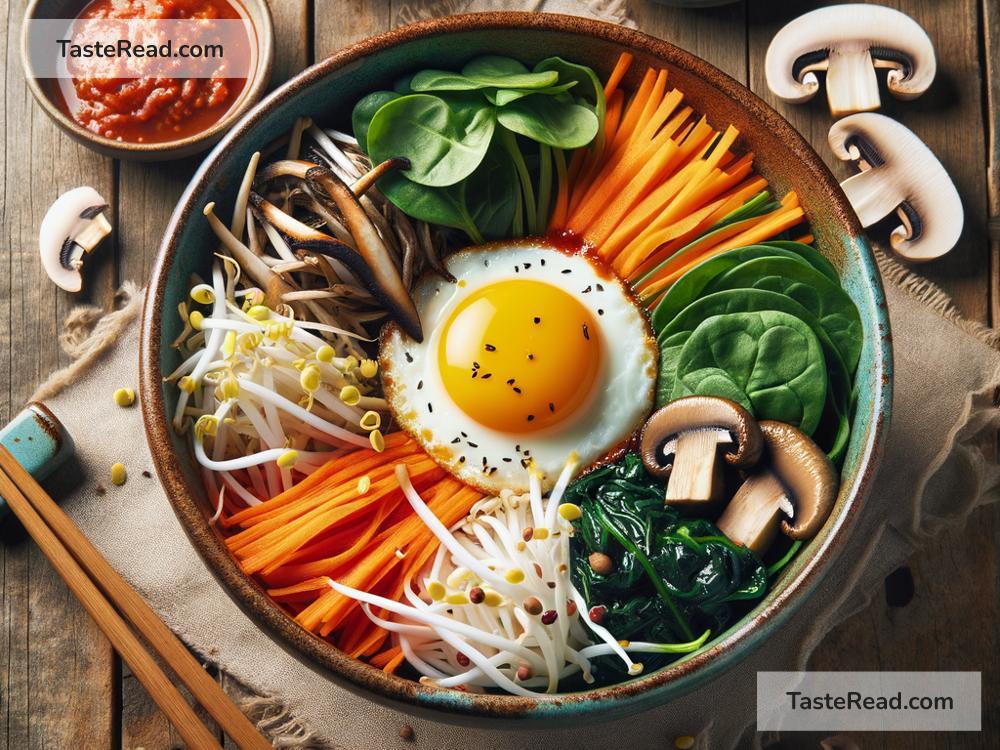Step-by-Step Guide to Making Korean Bibimbap at Home
Are you looking for a fun, colorful, and delicious meal to make at home? Why not try Korean bibimbap (비빔밥)? Pronounced “bee-bim-bap,” this dish is one of Korea’s most popular meals. Its name means “mixed rice,” and it is a bowl filled with steamed rice, sautéed vegetables, protein, and a spicy sauce. It’s easy to customize, making it great for families or anyone who loves experimenting with flavors.
Follow this step-by-step guide, and you’ll be making a beautiful bibimbap at home in no time!
What You’ll Need
Here are the main ingredients for bibimbap. You can find most of them at your local grocery store, but for a truly authentic taste, visit an Asian supermarket.
Ingredients:
- Rice: Steamed white rice (short-grain works best).
- Vegetables: Common choices are spinach, bean sprouts, carrots, zucchini, mushrooms, and cucumbers.
- Protein: Beef, chicken, tofu, or a sunny-side-up egg.
- Gochujang: Korean red pepper paste that gives bibimbap its signature spicy flavor.
- Soy sauce, sesame oil, and garlic: To season the vegetables and protein.
- Sesame seeds: For garnish.
- Optional toppings: Seaweed flakes, sliced green onions, or kimchi.
Step 1: Prepare the Rice
The base of bibimbap is plain steamed rice. Wash 2 cups of short-grain white rice thoroughly until the water runs clear. Cook it in a rice cooker or pot according to the package instructions. Once it’s ready, keep the rice warm while you prepare the rest of the ingredients.
Step 2: Chop and Cook the Vegetables
Bibimbap is known for its colorful presentation, so choose a variety of vegetables. Here’s how to prepare them:
- Spinach: Blanch the spinach in boiling water for 1-2 minutes, then drain and rinse it under cold water. Squeeze out the excess water and season lightly with soy sauce and sesame oil.
- Carrots: Peel and julienne (thinly slice) the carrots. Sauté them in a pan with a little oil until they’re tender, about 3-4 minutes.
- Zucchini: Slice the zucchini thinly and sauté it with a pinch of salt for 3-4 minutes.
- Bean Sprouts: Blanch the bean sprouts in boiling water for 1-2 minutes, just like the spinach. Drain and season with salt and sesame oil.
- Mushrooms: Use shiitake, button, or any other mushrooms you like. Slice them and sauté with soy sauce until they’re browned and flavorful.
Feel free to add or substitute vegetables based on your taste and what you have in your kitchen!
Step 3: Cook the Protein
For the protein, beef bulgogi is traditional, but you can also use chicken, tofu, or simply a fried egg.
To make beef bulgogi:
- Thinly slice beef (sirloin or ribeye works well).
- Marinate it in a mix of soy sauce, sesame oil, garlic, sugar, and pepper for at least 30 minutes.
- Sauté the beef in a hot pan until it’s browned and cooked through.
If you’re using tofu, pan-fry slices until golden. For a vegetarian option, add a sunny-side-up egg on top of your bibimbap just before serving.
Step 4: Prepare the Sauce
The sauce is what ties everything together in bibimbap. To make the spicy bibimbap sauce, mix the following ingredients in a small bowl:
- 2 tablespoons of gochujang (Korean red pepper paste).
- 1 tablespoon of sesame oil.
- 1 tablespoon of sugar or honey.
- 1 tablespoon of water.
- 1 teaspoon of vinegar.
- Optional: Add minced garlic for extra flavor.
Taste-test the sauce and adjust based on your preference. If you don’t like too much spice, use less gochujang and add a little more honey.
Step 5: Assemble the Bowl
Now comes the fun part—assembling your bibimbap!
- Start with a generous scoop of steamed rice at the bottom of your bowl.
- Arrange the cooked vegetables around the rice, each in its own section. The goal is to showcase the colors and textures.
- Add your protein (beef, chicken, tofu, or egg) in the center or on top.
- Drizzle the bibimbap sauce over everything. You can start with a small spoonful and add more as needed.
- Sprinkle sesame seeds on top, and optionally garnish with sliced green onions or seaweed flakes.
Bibimbap looks beautiful when served, so take a moment to admire your creation!
Step 6: Mix and Enjoy
To eat bibimbap, use a spoon to mix everything together in the bowl. The sauce coats the rice, vegetables, and protein, blending all the flavors into a harmonious dish.
Tips for Success
- Use fresh produce: Fresh vegetables make a big difference in taste and texture.
- Customize freely: Bibimbap is very flexible. Add avocado, roasted squash, or any toppings you love!
- Serve hot: Bibimbap is best when served warm. If you want a crispy rice base, use a hot stone bowl (called “dolsot”) and press the rice against the bottom.
Conclusion
Making Korean bibimbap at home is easier than you might think. With fresh vegetables, seasoned protein, and a spicy gochujang sauce, this dish is healthy, customizable, and full of flavor. Plus, assembling the bowl is a fun way to get creative with food.
So, gather your ingredients and give bibimbap a try—you might find yourself adding it to your list of favorite homemade meals!


